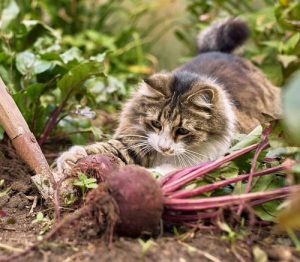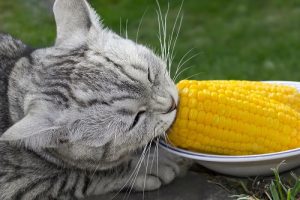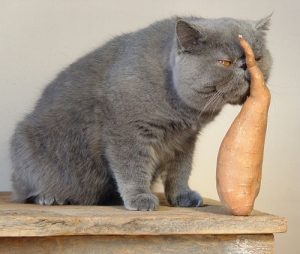Want to share your super healthy greens with your pet? Find out – “Can Cats Eat Lettuce?” and other valuable information.
It is no secret that leafy green vegetables are full of nutrition. While you are getting your daily dose of nutritious food, you might wonder if all those vitamins will work for your kitty too. Can Cats Eat Lettuce? It is a staple in many of our diets, but is it safe for felines? Scroll on to find out.
Can Cats Eat Cilantro? Find out here
What Is Lettuce?

Lettuce is a leafy green vegetable often used in salads or as a sandwich topping. It is known for its crisp and refreshing texture and is low in calories. Lettuce comes in various types, including iceberg, romaine, butterhead, and leaf lettuce. This vegetable is high in nutrients like vitamin A, vitamin C, folate, fiber, and water, making it a popular choice for those seeking a healthy diet.
Can Cats Eat Lettuce?
So, Can Cats Eat Lettuce? Yes, cats can eat lettuce in moderation, and it can even provide them with some nutritional benefits. It is important to keep in mind that this vegetable should not make up a significant portion of a cat’s diet and should only be given as a treat or supplement to its regular meals.
Cats are obligate carnivores, which means that they do not need vegetables to maintain a healthy lifestyle.
Is Lettuce Toxic For Cats?
Lettuce is generally not toxic to cats, and they can consume it safely in moderation. However, it is important to note that some varieties, such as romaine lettuce, can contain high levels of oxalates, which can lead to health issues in cats if consumed in large amounts. Additionally, some cats may have difficulty digesting lettuce, which can cause digestive problems.
Does Lettuce Contain Any Nutritional Value For Cats?
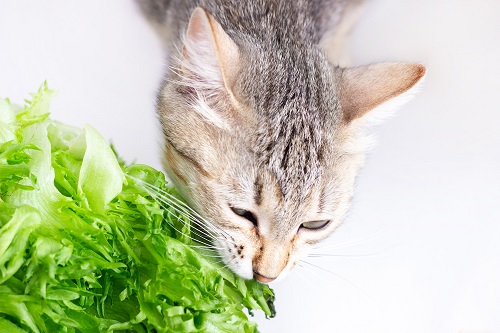
- Low calories: Lettuce is low in calories, making it an excellent option for overweight cats.
- Water: Lettuce contains high water content, making it a great option for cats who need to increase their water intake.
- Vitamins & Minerals: Lettuce contains several vitamins and minerals that can contribute to a cat’s overall health, such as vitamin C, vitamin K, folate, and potassium.
- Dietary fiber: The fiber content in lettuce can help promote healthy digestion in cats, and prevent hairballs.
- The nutritional value of lettuce can vary depending on the variety, with some types containing higher levels of vitamins and minerals than others. For example, romaine lettuce is a good source of vitamin C and folate, while iceberg lettuce has a high water content but is lower in nutrients.
How To Feed Lettuce To Cats?
- Choose fresh, crisp lettuce and wash it thoroughly to remove any dirt or contaminants.
- Chop or tear the lettuce into small pieces that are easy for your cat to eat and digest.
- Consider mixing the lettuce with other cat-friendly foods, such as cooked chicken or fish, to make it more appealing to your cat.
- Introduce lettuce gradually to your cat’s diet to ensure they tolerate it well.
A Few Concerns
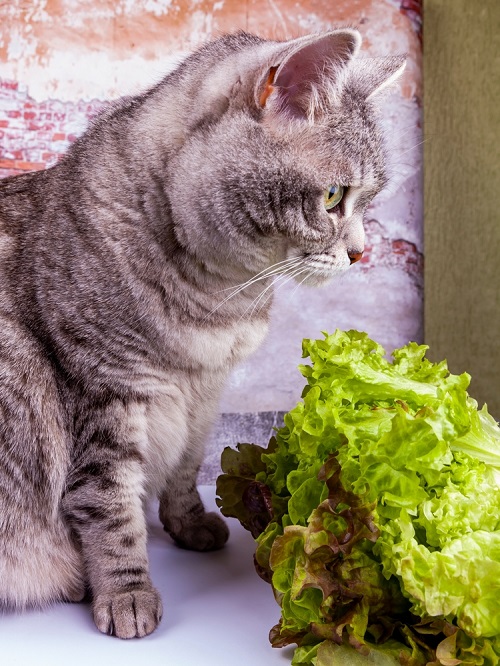
- Lettuce is not a significant source of nutrition for cats and should not be a staple in their diet.
- Some cats may have trouble digesting lettuce, which can lead to digestive upset or diarrhea.
- Lettuce may contain pesticides or other chemicals that can be harmful to cats, so it is important to choose organic or pesticide-free lettuce.
Something Important!
- While lettuce does not provide essential nutrients for cats, it can be a healthy and low-calorie treat in moderation.
- Make sure to chop the lettuce into small pieces so that your cat does not choke on it.
Can Cats Eat Lettuce? Quick Takeaways!
- So, Can Cats Eat Lettuce? Yes, lettuce is safe for cats if fed in moderation.
- Lettuce can offer various nutritional benefits for benefits, like essential vitamins and minerals, dietary fiber, and water.
- Chop clean, fresh lettuce into small pieces, and serve it to your cat. You can also mix it in cat food.
- Monitor your cat while it eats lettuce, and look out for any signs of distress.

